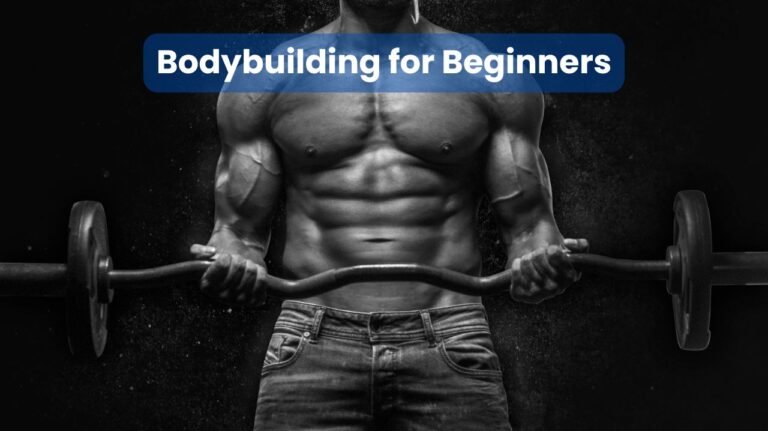How to Track Your Progress in Bodybuilding: Tools and Tips
Bodybuilding is a journey of continuous improvement and self-discovery. For those embarking on this path, tracking progress is not just beneficial—it’s essential.
This article delves into the various methods and tools that can help aspiring bodybuilders monitor their growth, stay motivated, and achieve their fitness goals.
👉 Boost in Focus and Energy to Help Increase Pumps and Performance
👉 Increase Gains, Promote Muscle Growth and Boost Energy
👉 Powerful Muscle Growth, Increased Blood Flow, and Enhanced Pumps
👉 Bulk-Up, Increase Gains, And Improve Recovery
Why Tracking Progress Matters in Bodybuilding
Before diving into the how-to, it’s crucial to understand why tracking progress is so important in bodybuilding. Keeping tabs on one’s journey offers several benefits:
- Motivation: Seeing tangible improvements can boost morale and drive.
- Goal Setting: It helps in setting realistic, achievable goals.
- Identification of Plateaus: Tracking allows bodybuilders to recognize when they’ve hit a plateau and need to adjust their routines.
- Accountability: Regular tracking creates a sense of responsibility towards one’s fitness journey.
Key Metrics to Track in Bodybuilding
To effectively monitor progress, bodybuilders should focus on several key metrics:
1. Body Measurements
Taking regular body measurements is a cornerstone of tracking bodybuilding progress. Here are the essential areas to measure:
- Chest
- Waist
- Hips
- Biceps
- Thighs
- Calves
To ensure consistency, measurements should be taken at the same time of day, preferably in the morning before eating or drinking.
2. Body Weight
While not the be-all and end-all, body weight is still an important metric to track. It’s best to weigh oneself first thing in the morning, after using the bathroom and before eating or drinking anything.
3. Body Fat Percentage
Tracking body fat percentage gives a clearer picture of body composition than weight alone. There are several methods to measure body fat, including:
- Skinfold calipers
- Bioelectrical impedance scales
- DEXA scans
- Hydrostatic weighing
Each method has its pros and cons in terms of accuracy and convenience.
4. Strength Gains
Monitoring improvements in strength is crucial for bodybuilders. This involves tracking:
- One-rep max (1RM) for key lifts
- Working weights for different exercises
- Number of reps completed at a given weight
5. Progress Photos
Visual evidence of progress can be incredibly motivating. Taking regular progress photos allows bodybuilders to see changes that might not be immediately apparent in the mirror or on the scale.
Tools for Tracking Bodybuilding Progress
Now that we’ve covered what to track, let’s explore the tools that can help in this process.
1. Fitness Apps and Software
In the digital age, numerous apps and software programs are available to help bodybuilders track their progress. Some popular options include:
- MyFitnessPal: Great for tracking nutrition and workouts
- Strong: Focuses on strength training and allows for detailed workout logging
- BodySpace: A social fitness app with progress tracking features
- Fitbod: Uses AI to create and track personalized workout plans
These apps often sync with other devices and provide visual representations of progress over time.
2. Smart Scales
Smart scales go beyond just measuring weight. They can often provide data on:
- Body fat percentage
- Muscle mass
- Bone density
- Water weight
While not always 100% accurate, they offer a convenient way to track multiple metrics over time.
3. Fitness Trackers and Smartwatches
Wearable technology has come a long way in recent years. Fitness trackers and smartwatches can monitor:
- Heart rate
- Calories burned
- Sleep quality
- Steps taken
This data can provide insights into overall fitness and recovery.
4. Tape Measure
A simple yet effective tool, a flexible tape measure is essential for tracking body measurements. Opt for a soft, flexible tape measure designed for body measurements rather than a rigid measuring tape.
5. Skinfold Calipers
For those who want to measure body fat percentage at home, skinfold calipers are a relatively inexpensive option. While they require some practice to use accurately, they can provide consistent measurements over time.
6. Workout Journal
Sometimes, the old-school approach works best. A physical workout journal allows bodybuilders to log their workouts, track progress, and jot down notes about how they’re feeling. This tactile approach can be very satisfying and motivating for some individuals.
Tips for Effective Progress Tracking in Bodybuilding
Having the right tools is only part of the equation. Here are some tips to make progress tracking more effective and meaningful:
1. Be Consistent
Consistency is key when it comes to tracking progress. This means:
- Measuring at the same time of day
- Using the same tools and techniques for measurements
- Tracking at regular intervals (e.g., weekly or bi-weekly)
2. Focus on Trends, Not Daily Fluctuations
Body weight and measurements can fluctuate daily due to factors like water retention, food intake, and hormonal changes. Instead of getting hung up on day-to-day changes, focus on overall trends over weeks and months.
3. Use a Combination of Metrics
Don’t rely on a single metric to gauge progress. Combine different measurements like body weight, body fat percentage, strength gains, and visual changes for a more comprehensive view of progress.
4. Set SMART Goals
Use the data from tracking to set SMART (Specific, Measurable, Achievable, Relevant, Time-bound) goals. For example, “Increase squat 1RM by 20 pounds in 3 months” is a SMART goal.
5. Regularly Review and Adjust
Periodically review progress and adjust training and nutrition plans accordingly. This might involve changing workout routines, adjusting calorie intake, or modifying supplement regimens.
6. Don’t Obsess
While tracking is important, it’s crucial not to become obsessed with the numbers. Remember that bodybuilding is a journey, and progress isn’t always linear.
Common Mistakes in Tracking Bodybuilding Progress
Even with the best intentions, bodybuilders can fall into some common traps when tracking their progress. Here are some mistakes to avoid:
1. Comparing to Others
Everyone’s bodybuilding journey is unique. Comparing one’s progress to others can be demotivating and unrealistic. Focus on personal growth and improvements.
2. Neglecting Non-Physical Progress
While physical changes are important, don’t forget to track non-physical progress such as improved energy levels, better sleep quality, or increased confidence.
3. Measuring Too Frequently
Checking weight or taking measurements daily can lead to unnecessary stress and anxiety. Stick to weekly or bi-weekly measurements for a more accurate representation of progress.
4. Ignoring the Importance of Rest and Recovery
Progress isn’t just made in the gym. Tracking rest and recovery, including sleep quality and duration, is crucial for overall progress in bodybuilding.
5. Failing to Account for External Factors
Stress, illness, and life events can all impact bodybuilding progress. When tracking, make note of any external factors that might be influencing results.
Creating a Sustainable Tracking Routine
To make progress tracking a sustainable part of the bodybuilding journey, consider the following tips:
- Choose methods that fit your lifestyle: If you’re tech-savvy, apps might work best. If you prefer a hands-on approach, a physical journal might be more suitable.
- Set reminders: Use phone reminders or calendar events to stay on top of tracking days.
- Make it a habit: Incorporate tracking into your regular routine, such as taking measurements every Sunday morning.
- Share your progress: Consider sharing your journey with a workout buddy or online community for added accountability and support.
- Celebrate small wins: Acknowledge and celebrate progress, no matter how small.
👉 Pack On Muscle Mass and Get Bigger and Stronger
👉 Burn Fat and Get Seriously Ripped
👉 Get Explosive Strength and Maximum Stamina
👉 Become A Gym Beast With Legal SARMs Alternatives
Conclusion
Tracking progress in bodybuilding is an essential component of a successful fitness journey. By utilizing the right tools, focusing on key metrics, and avoiding common pitfalls, bodybuilders can gain valuable insights into their progress and make informed decisions about their training and nutrition.
Remember, the goal of tracking is not just to see numbers change, but to use that information to continually improve and move closer to fitness goals. With consistent effort and smart tracking, every bodybuilder can turn their aspirations into tangible, measurable results.
Whether you’re a beginner just starting out or an experienced lifter looking to break through a plateau, implementing these tracking strategies can help take your bodybuilding journey to the next level. Stay committed, stay consistent, and watch as your hard work translates into real, measurable progress.







